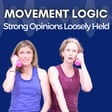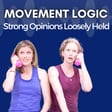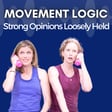
104: Can We Train Fascia?
In this episode of the Movement Logic Podcast, Laurel explores whether you can train fascia, separating myths from facts about this connective tissue. She discusses her personal journey with fascia-focused methods, including self-massage and Yoga Tune Up, and questions commonly held beliefs about fascia adaptation from exercise. Laurel critiques the metaphorical narratives versus physiological mechanisms, examining the roles of muscle, tendon, and the nervous system in recovery and training. She concludes with insights on why calling it "fascia training" might be more about branding than science.
Sign up for our FREE Bone Density Mini Course: Barbell 101!
Follow us on Instagram @movementlogictutorials
00:00 Can you train fascia?
02:26 Personal story
10:39 Questioning what I'd been taught about fascia
12:02 Fascia as values, worldview, group identity
16:04 How did we get here – fascia research congress
16:48 The reductionism that arose out of rejecting reductionism
18:02 The problem with overpromising around significance of fascia or training fascia
18:59 Blurring metaphor and mechanism
23:24 What is fascia?
24:03 Massage mostly stimulates skin
24:29 Deep fascia and tendons are different
25:18 Fascia not great at force transfer
26:39 Visceral massage
27:04 Training fascia is not what trains proprioception – motor learning is
28:14 What makes a tissue trainable?
33:42 Difference between general and specific training
38:22 Adhesions, trigger points, scar tissue, fibrosis
40:51 Hydrating fascia
42:35 Circulation improvements
58:19 Wrapping it up


